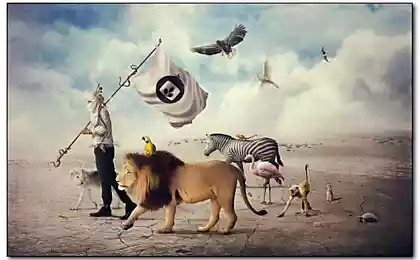1318
Animal sacrifice in Nepal (8 photos)
November 24 in Nepal, the annual ritual of animal sacrifice, which is the main part of the two-day religious festival Gadhimai Mela (Gadhimai Mela), designed to appease the Hindu goddess Gadhimai severe. Organizers announced the sacrifice that for sacred killings this year assigned 250 people and planned to sacrifice 10 thousand buffalo.
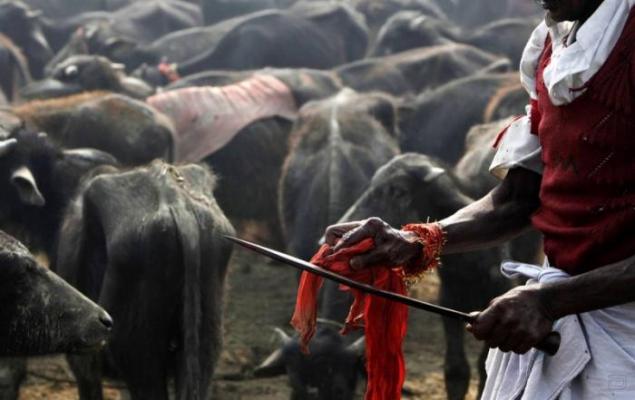

1) raised high machetes, these people - one of the many who are taking part in mass religious buffalo sacrifices at the temple Gadhimay (Gadhimai) in the village of Bariyapur (Bariyapur), south of Kathmandu on November 24. Hundreds of thousands of Hindus gathered at the temple, where the annual sacrifice animals to appease the Hindu goddess Gadhimai. The festival sparked protests by activists animal rights. (Gemunu Amarasinghe / AP)

2) The believer walks near the corrals, where buffalo await his death. According to one of the Nepalese ministers, the ceremony is the largest sacrificial killing of animals in the world. (Gemunu Amarasinghe / AP)

3) Believers bask in anticipation of the start of the ritual sacrifice. Gadhimay Festival is held every five years. Participants believe that animal sacrifices to the goddess can bring prosperity and an end to the influence of evil forces. (Gopal Chitrakar / Reuters)
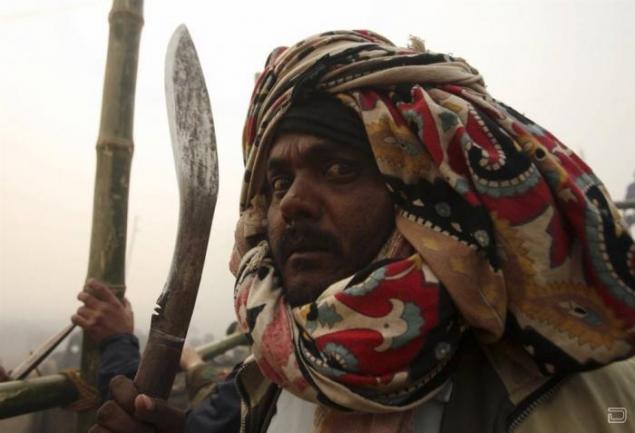
4) The man who will kill the animals. Carrying the sacred killings this year assigned 250 people who will kill more than 200,000 animals. (Gopal Chitrakar / Reuters)
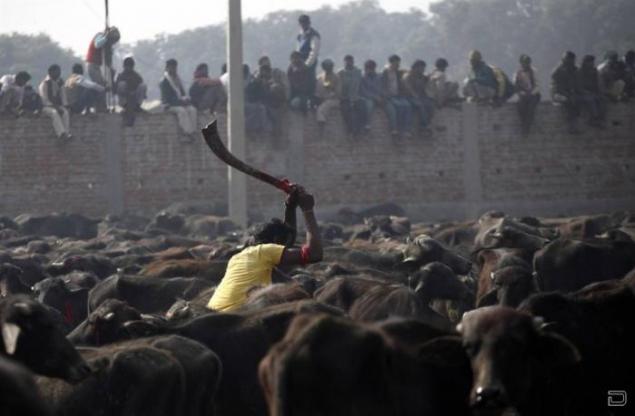
5) 24 and 25 November more than 200 thousand buffaloes, pigs, goats, chickens and pigeons in the temple is supposed to kill in the jungle of Bara district. (Shruti Shrestha / Reuters)
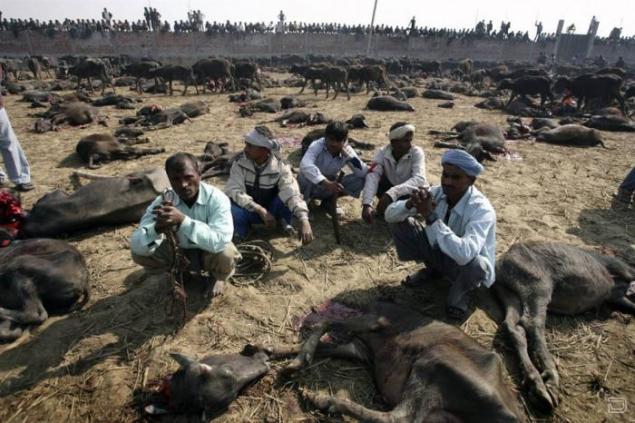
6) Men resting after the mass killing of animals. Carcasses of killed animals believers take back to their villages and eaten during the holiday. The meat is considered blessed, and people believe that its use protects against evil. (Gopal Chitrakar / Reuters)
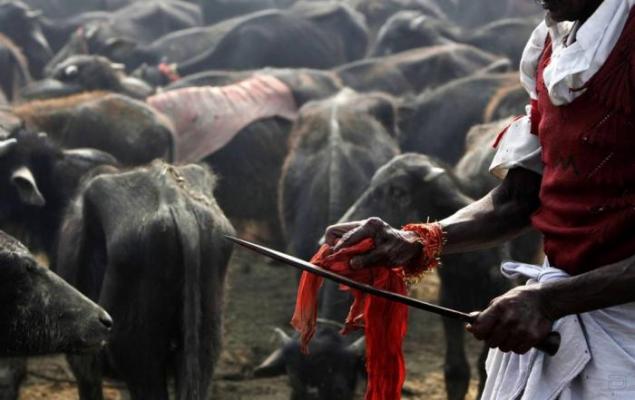
7) The butcher wipes the blood from his knife after he hacked the buffalo. (Gemunu Amarasinghe / AP)
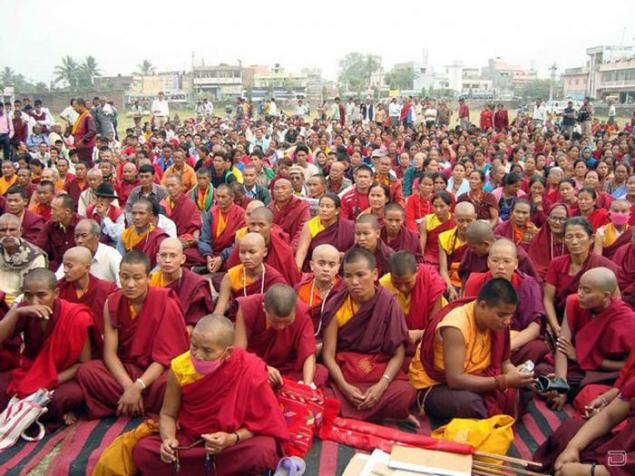
8) On the eve of the festival Gadhimai Mela community representatives Buddhists and Vaishnava, Krishnapranami and Om Shanti, held a demonstration in Kalyan, Bara District, urging pilgrims instead of killing animals to offer to the deity of fruits and vegetables. Nepal, November 12, 2009


1) raised high machetes, these people - one of the many who are taking part in mass religious buffalo sacrifices at the temple Gadhimay (Gadhimai) in the village of Bariyapur (Bariyapur), south of Kathmandu on November 24. Hundreds of thousands of Hindus gathered at the temple, where the annual sacrifice animals to appease the Hindu goddess Gadhimai. The festival sparked protests by activists animal rights. (Gemunu Amarasinghe / AP)

2) The believer walks near the corrals, where buffalo await his death. According to one of the Nepalese ministers, the ceremony is the largest sacrificial killing of animals in the world. (Gemunu Amarasinghe / AP)

3) Believers bask in anticipation of the start of the ritual sacrifice. Gadhimay Festival is held every five years. Participants believe that animal sacrifices to the goddess can bring prosperity and an end to the influence of evil forces. (Gopal Chitrakar / Reuters)

4) The man who will kill the animals. Carrying the sacred killings this year assigned 250 people who will kill more than 200,000 animals. (Gopal Chitrakar / Reuters)

5) 24 and 25 November more than 200 thousand buffaloes, pigs, goats, chickens and pigeons in the temple is supposed to kill in the jungle of Bara district. (Shruti Shrestha / Reuters)

6) Men resting after the mass killing of animals. Carcasses of killed animals believers take back to their villages and eaten during the holiday. The meat is considered blessed, and people believe that its use protects against evil. (Gopal Chitrakar / Reuters)

7) The butcher wipes the blood from his knife after he hacked the buffalo. (Gemunu Amarasinghe / AP)

8) On the eve of the festival Gadhimai Mela community representatives Buddhists and Vaishnava, Krishnapranami and Om Shanti, held a demonstration in Kalyan, Bara District, urging pilgrims instead of killing animals to offer to the deity of fruits and vegetables. Nepal, November 12, 2009



